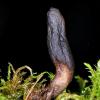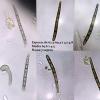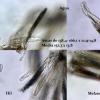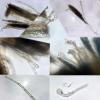
06-03-2015 13:53
De Galicia, en jardin entre arboles diversosA v

06-03-2015 18:09
Martin PastircakHi to all,I would appreciate if someone has this a

06-03-2015 14:11
 Zuzana Sochorová (Egertová)
Zuzana Sochorová (Egertová)
Hello,please, has someone got the monograph on Coo

06-03-2015 13:08
Martin PastircakHi to all,I would appreciate if someone has this a

27-02-2015 01:38
 Miguel Ángel Ribes
Miguel Ángel Ribes
This small, 800 µm, with brown hymenium and more

01-03-2015 13:07
Elsa SousaCould someone give me a clue on this? I found thes

05-03-2015 20:30
 Alessio Pierotti
Alessio Pierotti
.... someone has the journal "Metrodiana" ?Alessio
A ver que os parece

Hello,
I think you should give fotos of the paraphyses, at best some. The paraphyses are more important for determinatung black earth tounges than the spores.
Yours, Lothar
Hola Joseba:
es Geoglossum, el aspecto macroscópico unido a la forma de las paráfisis y medidas esporales apuntan a G. brunneipes. En la foto con IKI no se observa ninguna reacción, debería ser hemiamiloide.
Un saludo.
Sabino.
En la primera muestra que hice con IKI si que algun asca tomo tono azul en el apice, pero en la ultima que he hecho, lo las he visto, solo aparecieron con Melzer, cosa que me sorprendio-
Saludos
Joseba



 Parafisis-0002.jpg
Parafisis-0002.jpg